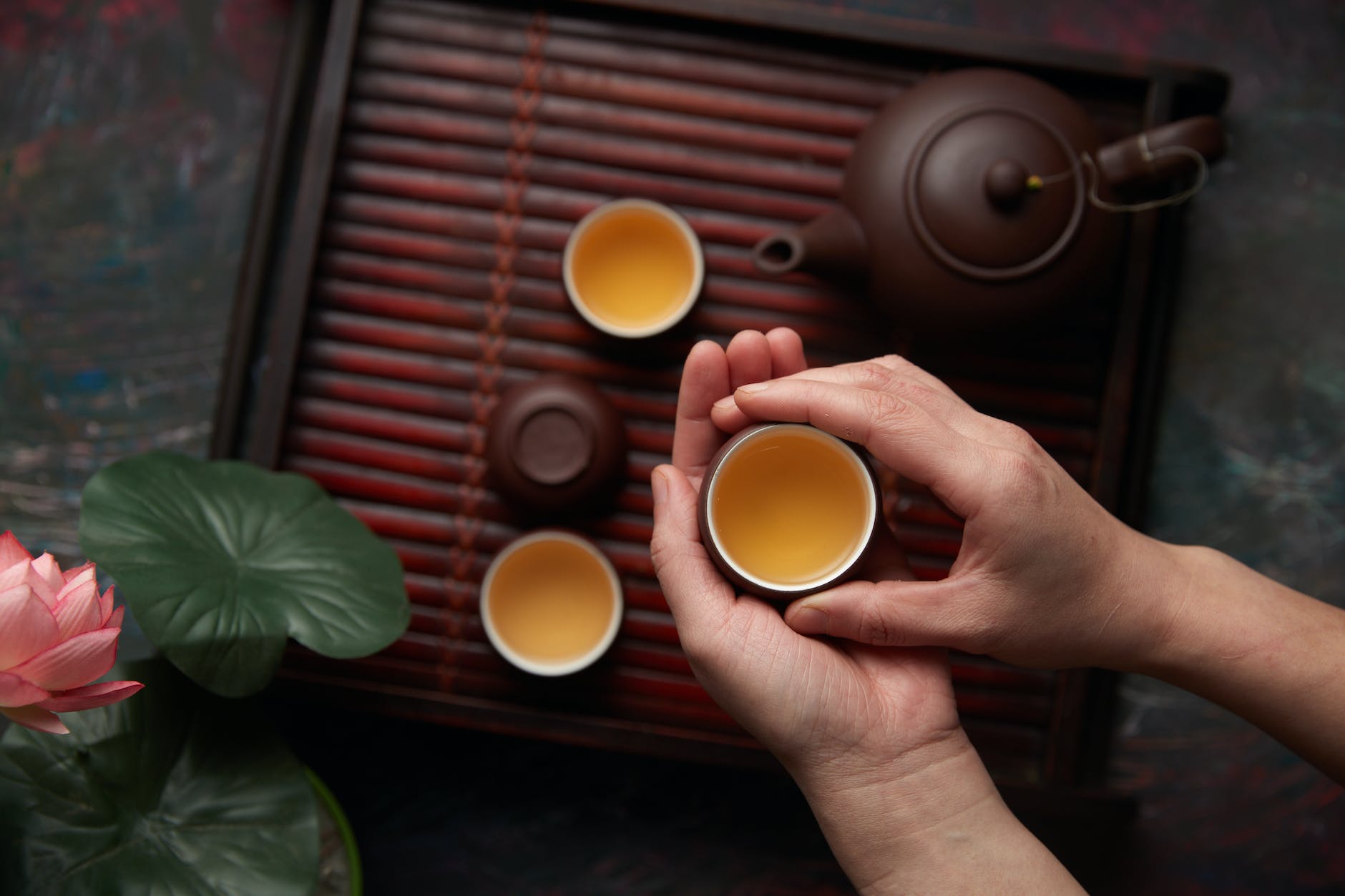

Rejuvenating Your Oolong: The Magic of Roasting Tea at Home
A Tale of Oolong Tea
To fully appreciate the joy of re-roasting oolong tea at home, let’s embark on a journey to understand the very heart of this cherished beverage: the oolong tea itself.
Oolong, or ‘Wulong,’ is a traditional semi-oxidized Chinese tea, positioned splendidly between unoxidized green teas and fully oxidized black teas. This marvelous beverage is cherished for its rich and complex flavor profile, exhibiting a beautiful dance of both green and black tea characteristics.
Oolong tea is born from the leaves of the Camellia sinensis plant, the common parent of all tea varieties. Its production process is what sets it apart. After the leaves are plucked, they’re gently bruised to initiate oxidation. Then, depending on the desired flavor profile, the oxidation process is halted midway by heating the leaves. This process, known as “fixing,” usually involves pan firing or steaming the leaves.
Roasting: The Soul of Oolong
However, one of the defining aspects of many oolong teas is an additional step: roasting. The art of roasting, an age-old practice, imparts a toastiness to the tea, adding depth and complexity. This process typically involves a slow roast at a low temperature, which allows for a meticulous transformation of the tea’s flavor profile. Roasting can range from light (bringing out floral and fruity notes) to heavy (resulting in a robust, nutty, and caramel-like flavor).
Roasting isn’t just a one-time process at the time of production; it can be repeated long after, giving birth to a fascinating concept: re-roasting old oolongs.
The Revival of Aged Oolongs
It’s a fact less-known, but older oolong teas can be given a new lease of life through re-roasting. Oolong teas are known for their aging potential, but as they age, they can lose some of their vibrancy. Re-roasting can awaken those dormant flavors and aromas, renewing the tea’s vitality.
Can this magic of re-roasting be applied to other teas? While theoretically possible, re-roasting tends to work best with oolongs due to their semi-oxidized nature and initial roast. However, some aged white teas and raw Pu-erh can also benefit from a gentle reheat.
The Art of Home Roasting
Now, let’s dive into the captivating process of roasting tea at home.
Here, I’ll share my experience of re-roasting a 2021 oolong tea using a simple but effective setup: a copper roasting spoon and a finum tea warmer base powered by a tea light candle.
Start with preheating your roasting spoon. Then, add a small quantity of tea. The key here is to stir the leaves gently and continuously to ensure even roasting and to prevent them from burning. You’ll know it’s time to stop when the leaves darken slightly and release a rich, toasty aroma. The entire process can take a few minutes, so patience is essential.
The result? A spectacularly rejuvenated oolong, with flavors and aromas that make it feel brand new. The roasted tea was more nuanced and vibrant compared to its unroasted 2021 counterpart, a clear testament to the transformative power of roasting.
Step-by-Step Guide: Roasting Your Oolong Tea at Home

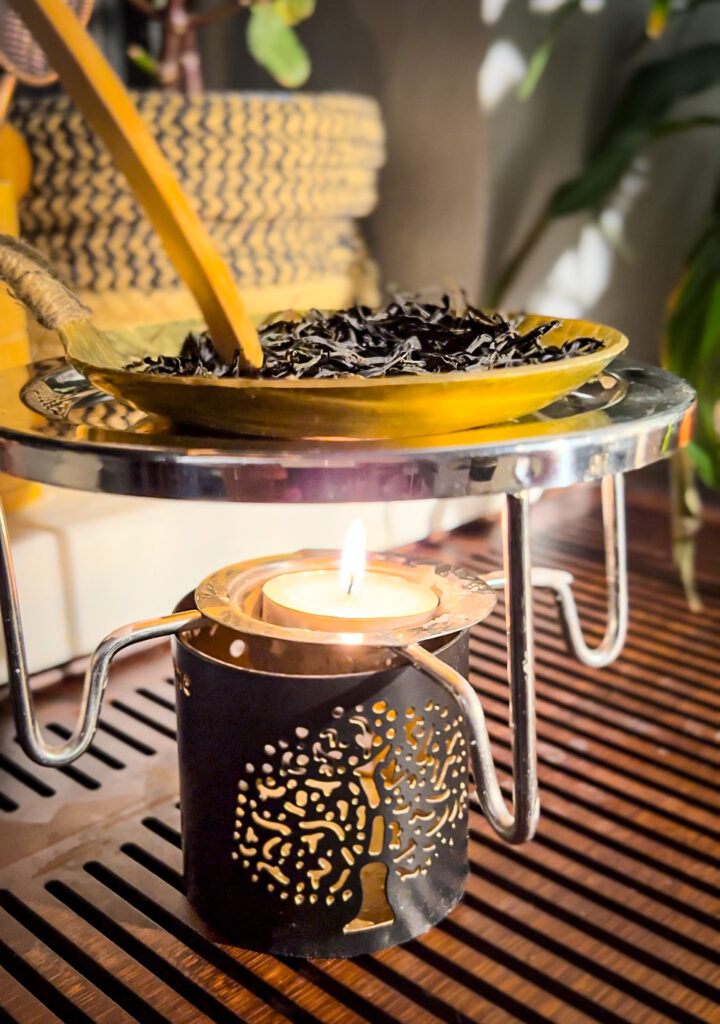

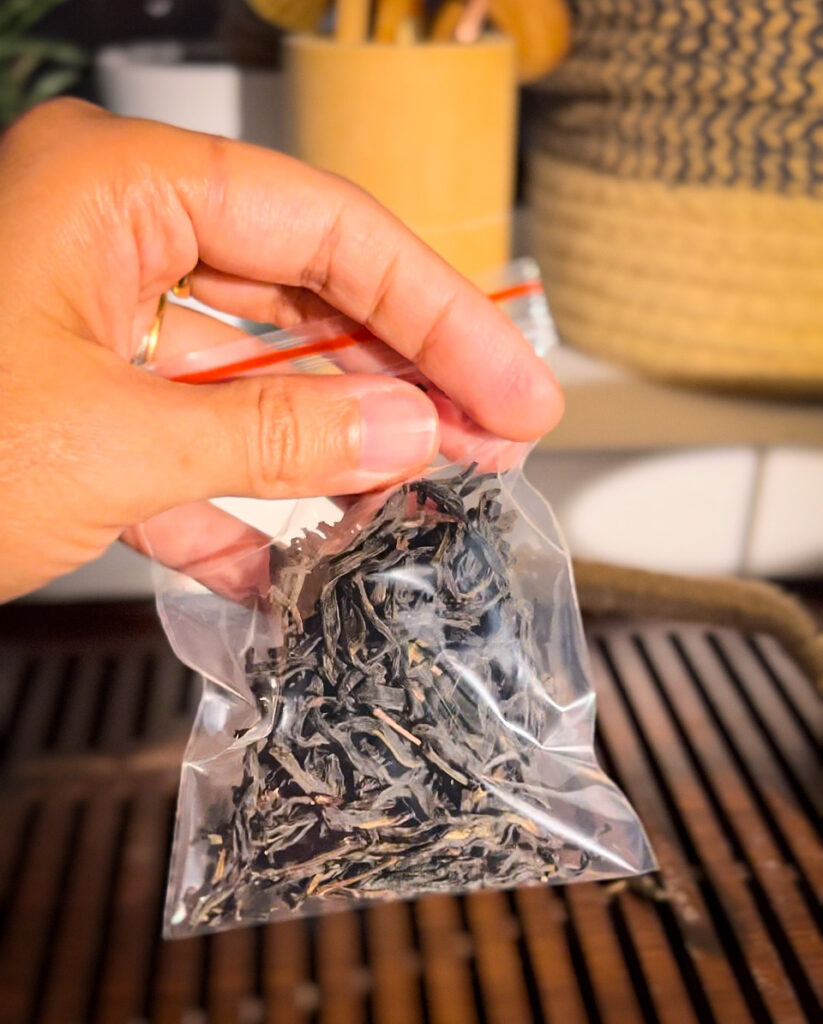

Step 1: Gather Your Materials For this process, you will need your aged Oolong tea, a copper roasting spoon, and a finum tea warmer base with a tea light candle. If you don’t have a copper roasting spoon, a small clean pan will work just fine.
Step 2: Preheat the Roasting Spoon Place the copper roasting spoon over the finum tea warmer. Make sure the spoon is adequately heated before you begin the roasting process.
Step 3: Measure Your Tea Measure approximately 6 grams of Oolong tea. This quantity can vary depending on the size of your roasting spoon and your personal preference.
Step 4: Begin Roasting Place the Oolong tea leaves into the preheated roasting spoon. Be sure to spread the leaves evenly in the spoon to ensure an even roast.
Step 5: Roast Your Tea Begin to gently stir your tea leaves. The key here is to maintain constant movement to prevent your tea leaves from burning and to ensure an even roast.
Step 6: Monitor Your Tea Pay close attention to your tea as it roasts. The leaves should darken slightly and give off a distinctly toasty, fragrant aroma. If the tea starts to smoke or smells burnt, remove it from the heat immediately.
Step 7: Cool and Store Your Tea After the tea leaves have been roasted to your satisfaction, remove them from the heat and allow them to cool completely. Then, store them in an airtight container away from light, moisture, and strong odors.
Roasting tea is a delicate art, and it may take a few tries before you achieve your perfect roast. But, the reward of a revitalized, richly flavored Oolong tea is well worth the effort!
The Chinese Lore of Tea Roasting
To make your tea journey even more exciting, let’s delve into the ancient Chinese stories around tea roasting. There’s a beautiful legend about a Chinese tea farmer who discovered the process of oxidation and roasting by accident. One autumn, he was distracted by a deer after harvesting his tea leaves. When he returned a few days later, he found the leaves had changed color due to natural oxidation. Undeterred, he decided to heat the leaves in a wok to prevent further change. To his surprise, the resulting brew had a new, enchanting flavor. Thus, the magical process of tea oxidation and roasting was born!
Roasting tea at home connects you with these ancient tea traditions, making each cup a celebration of history, culture, and personal craftsmanship. So why not give it a try? The joy of savoring a cup of tea that you’ve personally rejuvenated is a pleasure like no other. Experience this magic, and let each sip tell a tale of transformation. As you savor your newly roasted Oolong, you become part of a time-honored cultural practice that celebrates patience, attentiveness, and the simple joy of transforming something familiar into something extraordinary. Happy roasting!

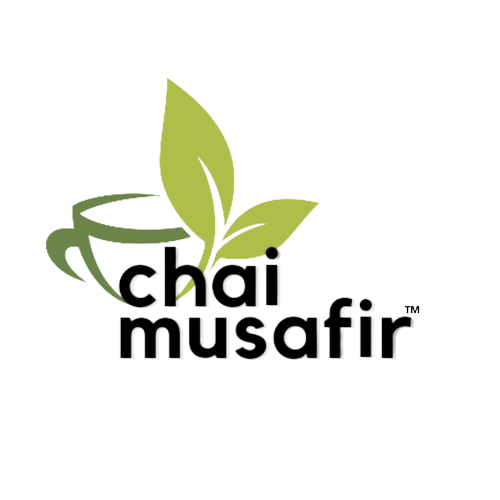
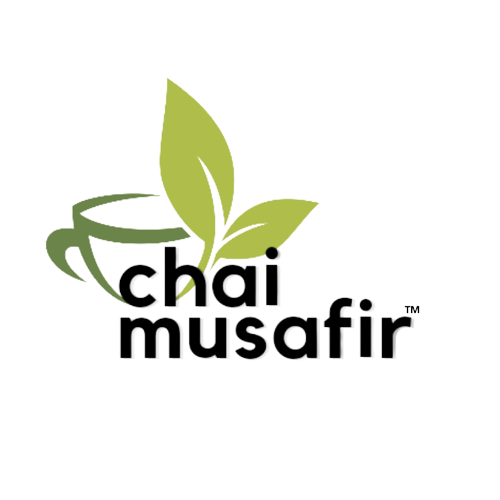
Leave a Reply